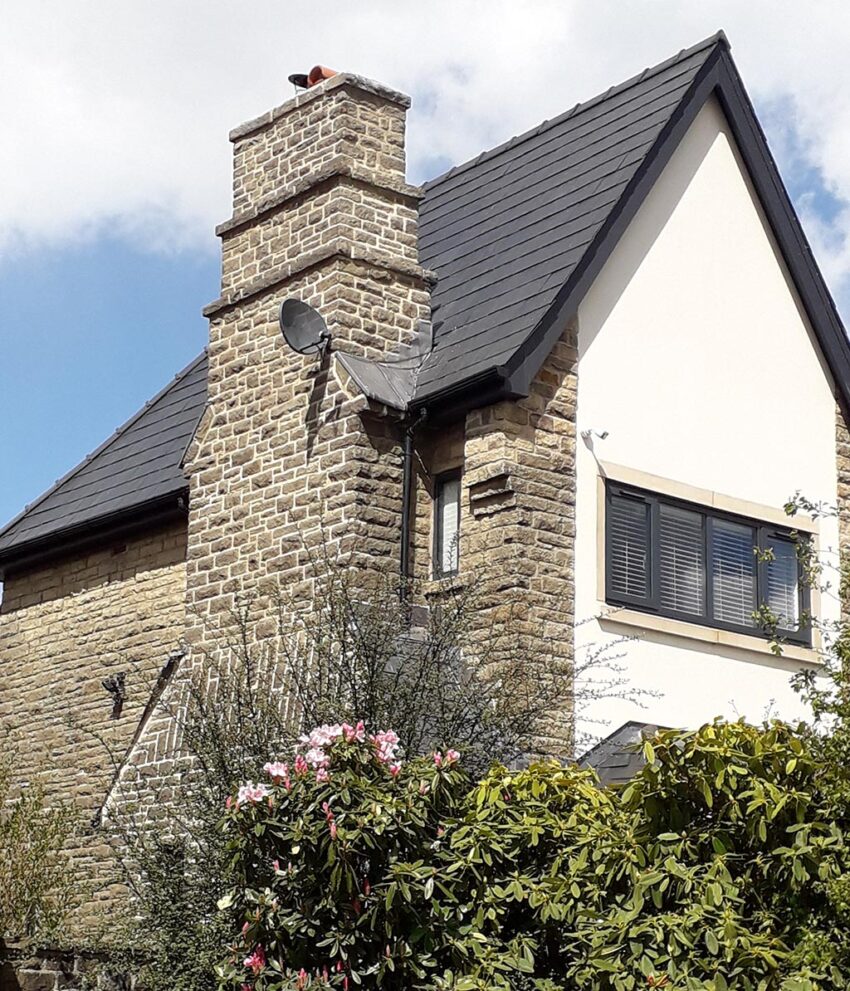Solving water-ingress issues to Quarrymaster’s gable end.
Despite extensive renovations, this former Quarrymaster’s house was suffering from water ingress. We were tasked to source and correct the issues, all related to the traditional large stone chimney stack.
One of the key issues that we encounter during Heritage Property Repairs is cement mortar. This is non-porous and as such traps moisture. Therefore, the moisture must evaporate through the masonry, eventually causing damage evident by ‘blowing’ (shearing-off) the faces from stone or brickwork.
Cement hardens overtime, damaging the surrounding masonry and cracking. This permits water ingress into the cracks that degrades the structure further and washes any bedding mortar. A Lime mix – undertaken by an experienced Craftsman – is a traditional porous ‘breathable’ product. This permits the passage of moisture without damaging masonry. Its flexibility is also suited for heritage properties which are not necessarily rigid structures, unlike modern houses design.
As the structural integrity of this Quarrymaster’s chimney was sound, we identified 3 sources of water ingress:
1) Lead Work
Although relatively new, the existing leadwork was poorly detailed and in the incorrect Code. The coding of lead refers to the category of the thickness of the material. Detailing guidelines are set out by the Lead Sheet Association who are the authority on leadwork and are now known as The Lead Sheet Training Academy. As such, we found that the lead was not preventing water ingress at critical abutments.
The lead back-gutter had been formed incorrectly from 2 pieces of lead. The flashing did not continue fully around the chimney and over the angled stonework. The lower level roof structures required new soakers and flashings as they had not been keyed deeply into the stonework at the correct joints.
2) Lime Pointing
We found that the mortar was cementitous and had overpointed the existing failing substrate. We raked out the joints, and repointed the chimney at the high level stack and face elevation with a lime mortar mix. We formed a lime fillet to the high level stone cills in order to shed the water away from the ledges.
3) Flaunching
The flaunching (or capping) to the Chimney top had been formed in a cement and general sand mix. This had failed and we reflaunched with a Lime and grit sand mix. Also, the bedroom’s open fireplace had been capped, trapping moisture from the hot air that rises. We added a cowl to open ventilation to the flue.
Since the works have completed, the chimney has stood up to our stubborn Lancashire weather. This former Quarrymaster’s house is an excellent example of how understanding materials and skilled Craftspersons are essential when undertaking a project. Lack of knowledge and inexperience can cause significant damage to a buildings wellbeing.
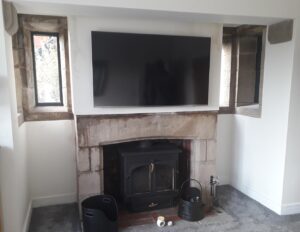
Evidence of water ingress in downstairs fireplace 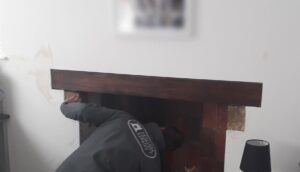
Evidence of water ingress in upstairs fireplace 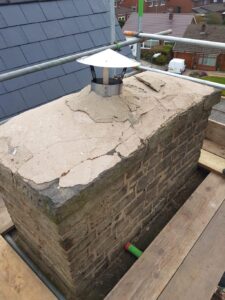
Failed cement chimney flaunching (capping) 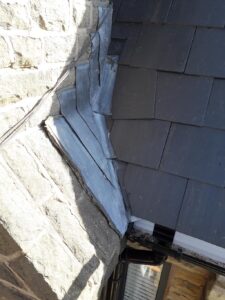
Poor detail of existing lead flashing 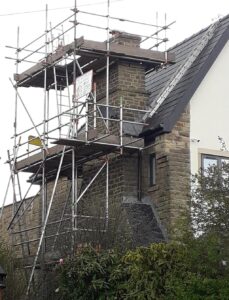
High-level access to facilitate works 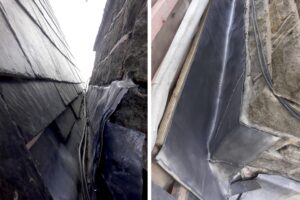
Before (left) and after (right) lead back gutter to chimney 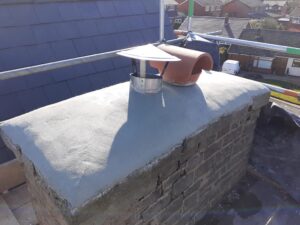
Renewed flaunching (capping) and additional cowl 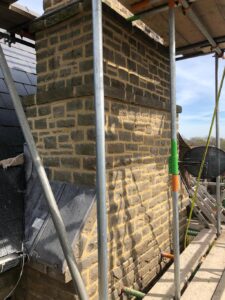
Corrected lead flashing and lime work in progress 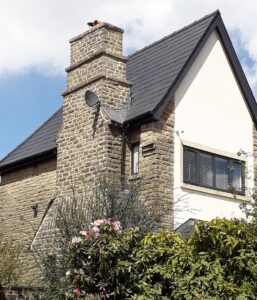
Completed works

